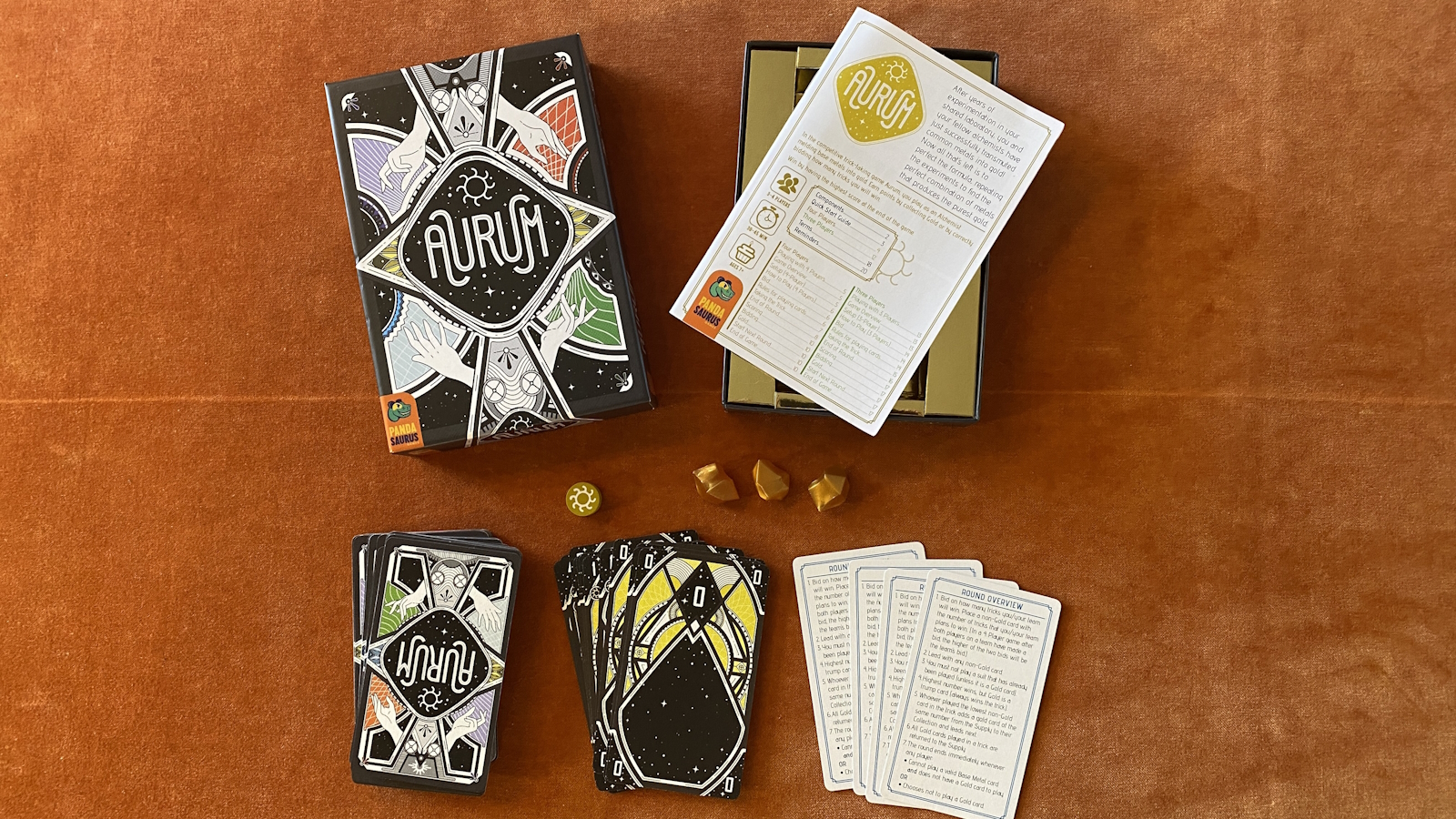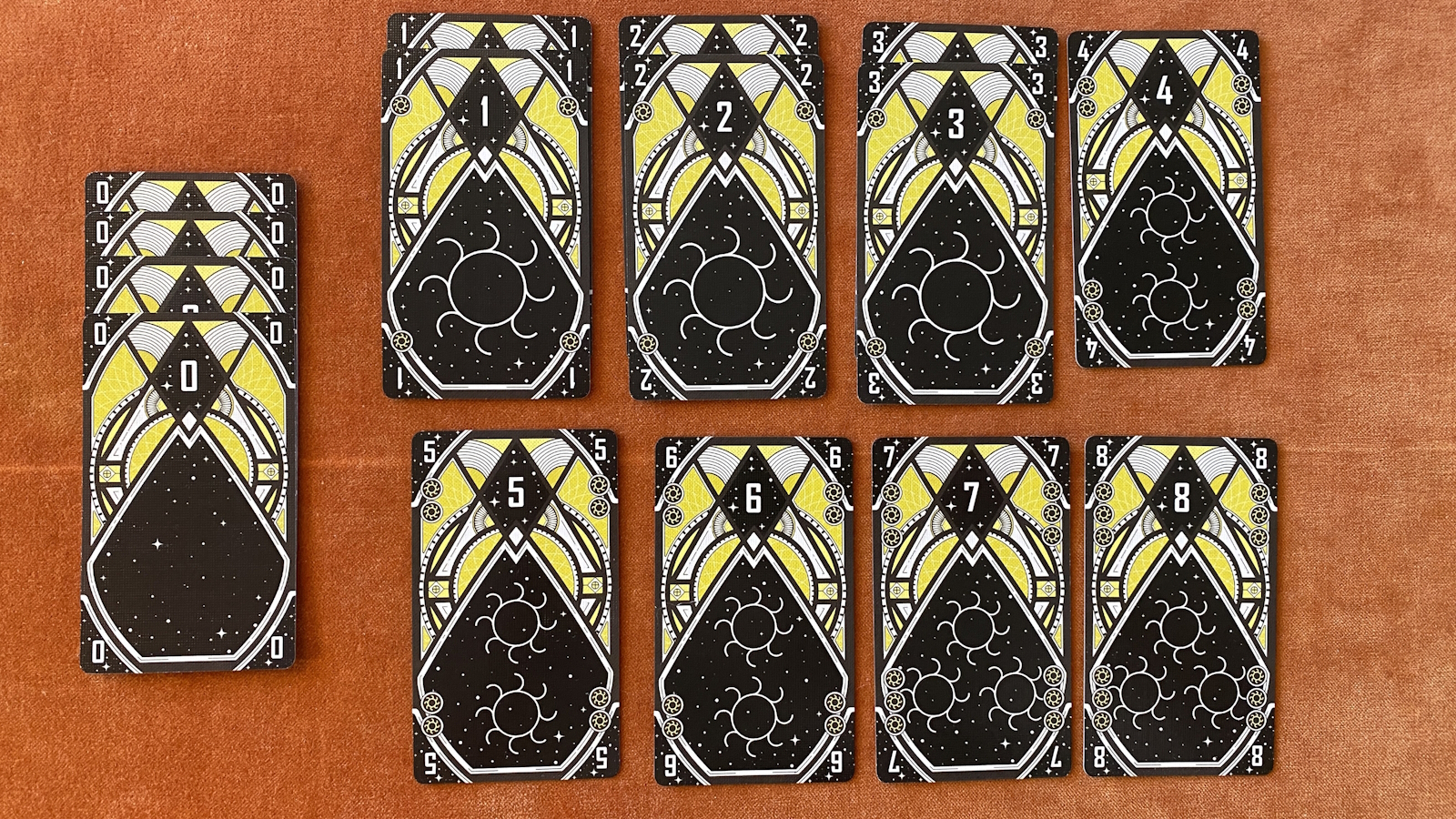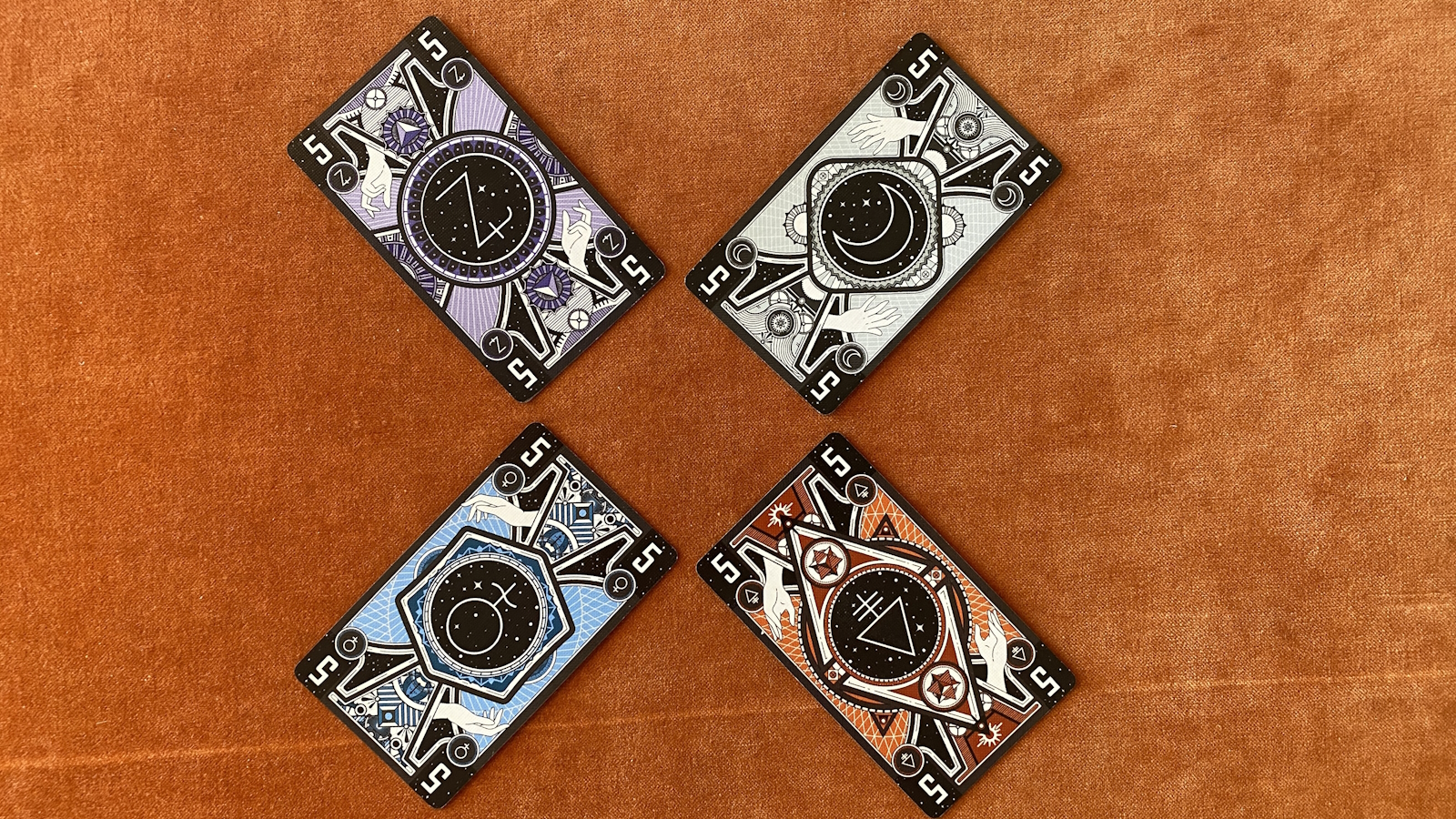
Aurum is a trick taking game that is easiest to learn if you’ve never played a trick taking game before. Unlike most trick taking games, you have to play a different suit than what has already been played during the current trick. The trump suit is always gold, which is never in the deck and instead a separate set of cards that you keep face up in front of you. A round ends immediately in the middle of a hand when someone is unable to play a card. First player or team to win two rounds wins the game.
Components
The cards are non-standard sized and of good quality. They feel good and shuffle easily, featuring interesting alchemy style art. The suits are bismuth, phosphorus, zinc, copper, silver, and gold, so good luck remembering those by name. There are three generic plastic gold pieces to keep track of round wins and a single wooden piece to mark the start player. The box is small and perfectly sized for the game components.
The rules are okay, but have a few places where information is missing. I had to do some online checking to figure out how a few of the mechanics were supposed to work.

All components of the game.
Gameplay
After receiving your initial hand of cards you first choose one to be your bid. The value of your bid is how many tricks you think you will win. If you win more points than your bid, you will earn points equal to the bid, while winning exactly that many tricks earns you double. In a team game, the higher of both players’ bids is the one used.
A trick begins with the first player playing any card from their hand. Each player in clockwise order follows with a card of a different suit. There is always one more suit than the number of players, so the last player in a trick will have two options. High value will win regardless of the suit. In addition, the low value will get a matching value gold card and lead the next hand. All of the gold cards start in a pool in the middle of the table, except for the zero value gold card that each player starts with.

The value 3 card wins the gold, while the 10s have to go to tie breaker to win the trick.
Gold cards are the trump suit. You may always choose to play a gold card from your play area instead of a different suit from your hand. If there are multiple gold cards played, high value wins as normal. However, gold cards higher than 0 are worth points towards winning the round, ranging from 1 to 3 based on the card’s value. Winning a lot of gold cards is a way to win the round even if you aren’t winning a lot of tricks, especially if you can have the lowest card in a trick still be fairly high. You can also spend those high point gold cards to win the trick if you think the trade is worth it.
One more use of gold cards is the ability to spend them in order to swap out your (or your teammate’s) bid. This can be useful if your bid was too ambitious or conservative.

Playing around the limited pool of gold cards is an important part of the game.
All of these changes from a standard trick taking game can make it really confusing for new players that are familiar with other games in the genre. To add to the confusion, since suits are never followed, there will often be ties. Ties are always won by the card played later in the round, so playing an 8 after an opponent plays an 8 means you’re winning the trick if there are no higher cards. But, it always means that you are winning the gold if there are no lower cards. This can lead to an interesting situation where if all players play the same value card, the last player will win the trick and the gold!

Be careful playing all of the same value, unless you are last!
Scaling
Aurum can be played with only three or four players, which is pretty standard for trick taking games. Three player games are a free-for-all, while four player games are played with teams. Playing with three players requires taking out one of the suits and some other cards from the deck, which slows down setup. The rules are basically the same between player counts, but the bidding becomes a little more complicated with four players, since you are bidding for your team instead of individually. The strategy is very different between player counts and both are fun.
With three players you just want to have the most personal points. That means win as many tricks as possible and gold as possible while having a good bid. Don’t be the odd player that gets neither during each trick.
With four players the dynamic becomes much more interesting. Ideally you want your team to both win the trick and win the gold, but this can be tricky. Unlike most trick taking games, leading a trick is usually bad. You aren’t choosing the suit to be played, just one suit that nobody else gets to play. But since there are two opponents after you, they can easily play both above and below what you lead. There are definitely some strategies you can try with your teammate to come out ahead. Whoever takes the gold has to lead the next trick, which makes for a very interesting self balancing mechanic.

If you must win the trick, you can always use your gold card.
Conclusion
Aurum is fun and quick. A single round would be too short, so the rules have you play to two wins, but really you could just play as many rounds as you like. Unfortunately, the rule book is not always clear, and combined with many unintuitive trick taking mechanics it can be a lot of work to learn how to play and teach. Once everyone has figured it all out, there are a lot of interesting decisions to be made. And it does feel like a trick taking game, just a weird one.
Aurum
Good
A fun, strategic trick taking game, once you figure out all the strange mechanics.
Pros
- Interesting and unique mechanics
Cons
- Learning the game can feel unintuitive